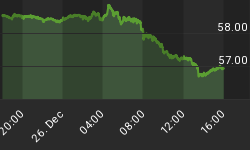The meltdown for oil prices came to a halt, at least temporarily, after Saudi Arabia signaled that the OPEC+ production cuts would be sticking around for a little while longer.
“We will do what is needed to sustain market stability beyond June. To me, that means drawing down inventories from their currently elevated levels,” Saudi energy minister Khalid al-Falih said, according to Arab News. He said that Saudi Arabia would “do what is needed” to maintain stability.
Oil prices have plunged by more than 13 percent in the last two weeks, a decline that al-Falih said was “unwarranted.” He added that there was an “emerging consensus among OPEC+ countries, to continue their work towards market stability in the second half of the year.”
When asked about the escalating U.S.-China trade war, as well as the prospect of yet another trade war between the U.S. and Mexico, and the resulting knock-on effect of a global economic slowdown on oil demand, al-Falih acknowledged the negative impact. “But you can be sure that we will be responsive,” he said.
The comments reinforce the likelihood that OPEC+ will roll over the production cuts when they meet in Vienna in a few weeks, extending the supply agreement for the rest of the year. The trade war, the cracks in the global economy, and the questions about demand make the choice a relatively easy one.
The bearish turn in the market comes even as Saudi Arabia added some supply in May to offset declines from Iran. According to Bloomberg, Saudi Arabia added 170,000 bpd in May, while Iran lost 230,000 bpd. Some smaller increases from Libya and Iraq fully offset the outages in Iran, helping to explain why the oil market softened in May despite the “maximum pressure” campaign by the U.S. on Iran. Meanwhile, Russia involuntarily chipped in a 76,000-bpd decline, owing to the contamination crisis along the Druzhba pipeline. Related: Tech Crackdown Creates $120 Billion Bloodbath
However, Saudi Arabia remains below its production limit as part of the OPEC+ deal, and Riyadh has been much more cautious about pumping more oil into a weakening market. It was always going to be difficult for Russia, which is more eager to increase production, to convince Saudi Arabia to abandon the production cuts after last year’s meltdown. But the latest nosedive means that the possibility of OPEC+ loosening the cuts has narrowed substantially.
“While tight fundamentals supported oil prices through mid-May, escalating trade wars and weaker activity indicators have finally caught up with oil market sentiment,” Goldman Sachs wrote in a note. The declines over the past two weeks were likely magnified by technical trading, as speculators had become overextended. The liquidation of speculative positions probably contributed to the swiftness of the selloff.
So, where do we go from here? OPEC+ will likely keep the cuts in place, which may prevent a full-blown glut, heading off a deeper slide. Supply outages, the prospect of further losses in Venezuela, Iran and Libya also will mitigate any surplus. Goldman Sachs says that prices “may recover from here,” although with heightened volatility. The big question now is how impactful the trade war will be on demand, and more broadly, by how much the global economy slows. Related: The Worst-Case Trade War Scenario
The investment bank says that there are three big factors that are “mispriced developments” in the oil market – “the Permian debottlenecking, the supply response of low-cost producers and the IMO 2020 shift in bunker sulfur regulation.” New pipelines and new export capacity along the U.S. Gulf Coast should “lower the global marginal cost of production,” Goldman analysts argued. The addition of new U.S. supply, and its integration into the global market, should narrow the difference between WTI and Brent. Ultimately, that presents a “multi-year threat to the market share and revenues” of OPEC+ producers. As a result, Goldman sees Brent falling from $72.50 in the second quarter to $65.50 in the third quarter, and then down to $60 per barrel next year.
The prospect of higher U.S. shale output and weakening demand from the trade wars does not bode well for oil prices. In the short run, however, the OPEC+ production cuts should prevent a much deeper downturn.
By Nick Cunningham of Oilprice.com
More Top Reads From Safehaven.com:

















